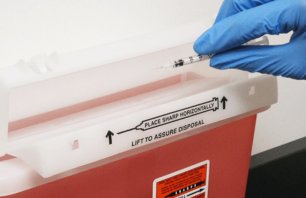Diversion in Veterinary Settings
Professionals in animal health care face many of the same challenges that occur in human care, such as keeping their staff safe, maintaining a positive presence in their community and most importantly, caring for their patients. Among those challenges is the threat of drug diversion: when controlled substances are illicitly displaced from their intended medical purpose. Drug diversion puts staff, the larger community and success of a veterinary practice at risk. Regardless if diversion happens in an animal or human health care setting, it can also put patients at risk and notably contribute to the nation’s opioid epidemic.
Diversion may be mistakenly regarded as an act that occurs only in human health care settings. However, since many veterinarians hold Drug Enforcement Administration (DEA) licenses and can prescribe, administer, carry, stock and dispense narcotics in clinics, they are not immune to the issue.
Common Drug Diversion Methods
Potential methods used to divert controlled substances include taking vials or syringes that are not fully plunged, intentionally under-dosing patients to divert the remaining pharmaceutical, and stealing pharmaceuticals from the facility’s stockroom. Kim New, J.D., BSN, founder of the International Health Facilities Diversion Association, warns that “diverting drugs from sharps containers is one of the last places one would expect someone with health care knowledge to go, yet diversion from sharps containers is very common.”
One diversion tactic specific to animal health is “vet shopping” where people visit multiple vets and lie about a pet’s symptoms or take an animal to multiple vets to divert drugs for the person’s use. A 2014 survey found that “13% of surveyed veterinarians were aware that an animal owner had intentionally made an animal ill, injured an animal, or made an animal seem ill or injured to obtain opioid medications; 44% were aware of opioid abuse or misuse by either a client or a veterinary practice staff member; and 12% were aware of veterinary staff opioid abuse and diversion.” According to the DEA, vet shopping is a prevalent issue for vets.
Health care workers may also tamper with patient medications by replacing controlled substances with another product, such as saline. The latter, when treating an animal may be more difficult to detect than in human care.
Mitigating the Risk of Drug Diversion in Veterinary Facilities
Diversion prevention begins with recognizing the threat, determining proper disposal policies and is followed by staff training. To reduce the risk of drug diversion, veterinarians should have a well-thought out mitigation plan. Learn how Stericycle can help your organization develop a comprehensive plan that includes equipment designed to address staff and community safety, while maintaining ongoing compliance.


